Electrical Enclosures Explained and their Common Applications
February 3, 2023
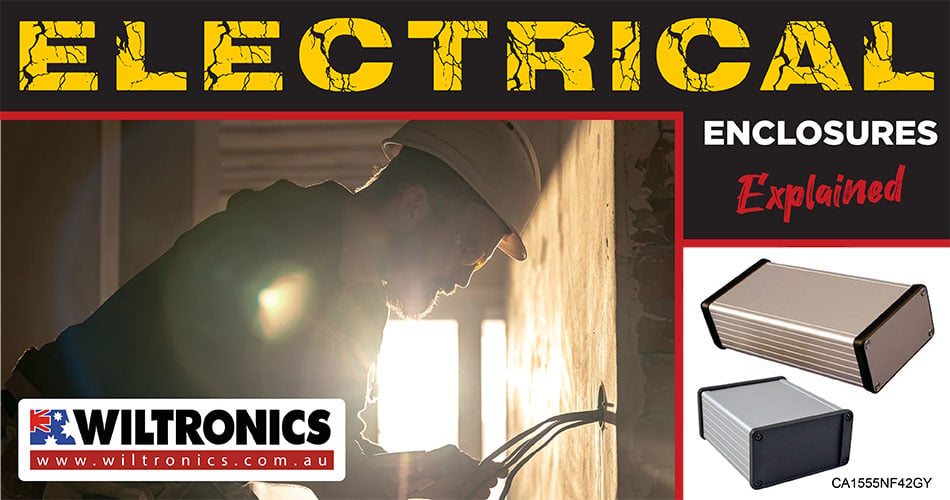
Electrical enclosures are key to protecting your most sensitive electronic equipment, as well as yourself!
When working around high-power circuits, electric shock becomes a much more serious risk. Tingles or jolts of pain are the least significant result of shock through your body. But static electricity buildup can also affect electronics itself. Circuit failures caused due to various environmental factors are one potential consequence.
To mitigate such risks, this is where electrical enclosures come into play. Designed not only to protect the device but also to prevent shock to operators.
Keep reading to learn more about these boxes, their working principles and applications.
Electrical Enclosures
Exposure to elements can be destructive, not only to the equipment. This can also result in electrical faults. The good thing is that these adverse effects are avoidable. Cue electrical enclosures.
Electrical enclosures are one of the most critical components in electronic circuits. As the name suggests, they appear to be a cabinet-type box. Inside, they keep wires, cable connections, and terminations concealed.
Designed with safety and protection in mind, they can withstand the toughest conditions. Some are waterproof with foam seals for optimal integrity. Besides protecting electronic components, they also prevent accidental electric shocks from occurring.
They offer the best protection for sensitive electrical equipment while increasing overall safety.
Technical Details
The design of electrical enclosures has partial-punched openings to house the wires. These holes also protect the electrical wiring and connections from getting tampered with. The cabinets are also where displays, knobs and switches are mounted.
If you do not have a durable surface to mount to, an aluminium mountain plate is your best bet. They are designed to make installing an enclosure a simpler task. They also handle environments where corrosion may be a factor.
The material available for electrical enclosures include:
- Fibreglass
- Carbon steel
- Stainless steel
- Polycarbonate
- Aluminium
In the power sector, steel and stainless steel electrical enclosures are commonly used. The material can hold out through extreme weather conditions while being lightweight. For instance, for operating panels used in harsh environments.
On top of that, steel and stainless steel are corrosion-resistant. Their thermal management systems also ensure there is less risk of breakdown. Such features guarantee the longevity of the enclosures and the equipment inside.
Other safety features
Fire prevention. If a fire starts inside the enclosure, spreading is less likely. This is due to the environmentally sealed nature of electric enclosures. By reducing such risks, enclosures can save lives. This also shows how durable and high-quality they are.
Built to handle the marine environment. Other than wind, dust, chemicals, and temperatures, enclosures also withstand water. This makes them ideal for marine environments! Not only that but also in continuous temperatures up to 150°C, e.g. in the hottest engine rooms.
Electrical Enclosures vs Junction Boxes
The main difference between the two is the size. Junction boxes are small, usually 5″x5″. Whereas electrical enclosures can get fairly large, around 18″x16″.
Junction boxes are also available in translucent and opaque covers. Enclosures, in contrast, are mostly not and have cabinet-like designs, as mentioned.
Applications of Electrical Enclosures
Electrical enclosures are ideal in applications that need a higher level of protection. Take connection points, for example. They are also common in engine and electrical rooms.
Other common applications include:
Irrigation wiring
Irrigation requires electrical energy to pump water from the source. Then, it sprinkles it on the grounds; a lawn sprinkler is a great example.
To achieve this, wiring must take place. The problem is that the joints at which the wires connect need to be protected from water. The same goes for the switches from the elements.
An electrical enclosure can provide the needed protection. At the same time, it keeps you safe from electrocution.
Low-voltage lighting
Accent lighting is a great way to boost the curb appeal of your home. But when installing them outdoors, they need extra protection from the sun, rain, dust, etc.
You must also ensure protection from children, guests and pets who may touch naked wires. The best way to avoid destruction and accidents is to use electrical enclosures.
Pool installations
A lot of electrical equipment goes into making a pool functional and comfortable. For these installations to work as expected, reliable energy is a must.
When it comes to wiring, it is important that water does not get to the exposed parts. Naked wires must also be out of the way. Otherwise, this could lead to injuries or fatalities to those swimming in the pool.
This is where waterproof electronic enclosures come in, ensuring safety.
Boat applications
The complex systems that make boats functional rely on electric power. Any part of the circuit left exposed is likely to come into contact with water. If this happens, the boat may fail to function.
To keep all boat applications protected, waterproof electronic enclosures come to the rescue! They help maintain a safe environment at all times, even in aquatic settings.
Get Your Electrical Enclosures Here!
We offer a great selection of Hammond Enclosures, including extruded aluminium and polycarbonate.
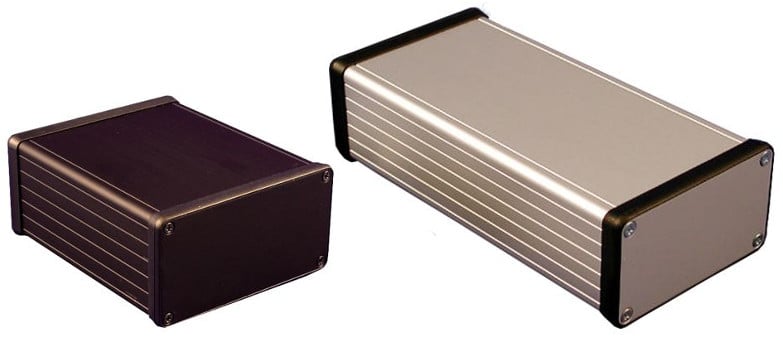
1. Hammond Aluminium Enclosure Box with Metal Ends
Ideal for housing Printed Circuit Boards (PCB) and for equipment interfacing. Features horizontal mounting slots for a PCB extruded from the internal aluminium.
It fits standard European-size PCBs and is available in different sizes and colours.
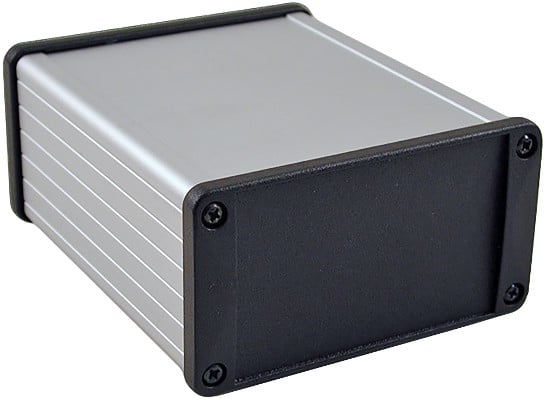
2. Hammond Extruded Aluminium Enclosure (EMI/RFI Protection) 120x104x54mm
Product code: CA1457N1201E
Heavy-duty and extremely robust. Designed to house PCB, is suitable for equipment interfacing, and meets IP54 ratings.
The body is constructed from a single piece of extruded aluminium. Features a minimum thickness of 1.5mm and includes a recessed area for labels or a membrane keypad.
The diecast aluminium end panels are rugged yet easy to machine. The front & rear gasket is a full perimeter conductive foam/fabric. Made of nickel/copper and CPSA (conductive pressure-sensitive adhesive).
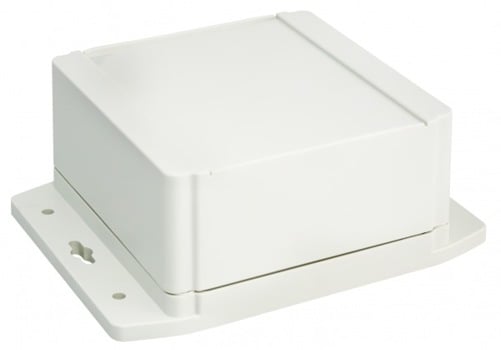
3. Polycarbonate Enclosure Recessed Lid
Product code: CA1555NF42GY
Sited for mounting PCBs or DIN rail-mounted components. Made of polycarbonate and UV stabilised for outdoor use. Features included:
- Rubber-sealed, recessed lid with two-piece Tongue & Groove construction. Protection against oil, dust and water.
- Flanged base
UL flammability rating of UL94 V0 at 3mm.
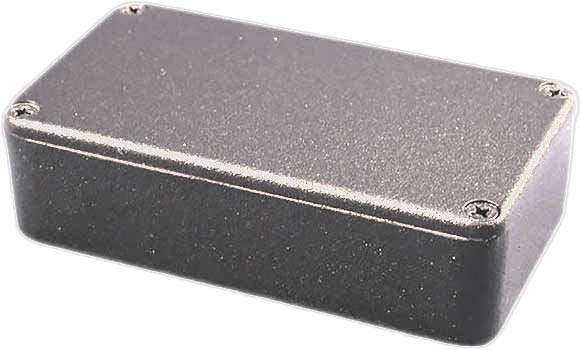
4. Hammond Diecast Aluminium Watertight Enclosure
Constructed of a diecast aluminium alloy. The lap joint construction offers protection from dust and splashing water. It also provides for improved EMI/RFI shielding.
The included separate, self-adhesive silicone rubber gasket makes the enclosure watertight. Even better, it meets IP65 standards. The unit also features a low sidewall angle (2 degrees or less) for easy PCB mounting.
Check our extensive range of electrical enclosures for more options. You will find everything you need for storing and protecting your electronic equipment!
© Electrotech Brands Pty Ltd 2023


Write a Comment
You must be logged in to post a comment.